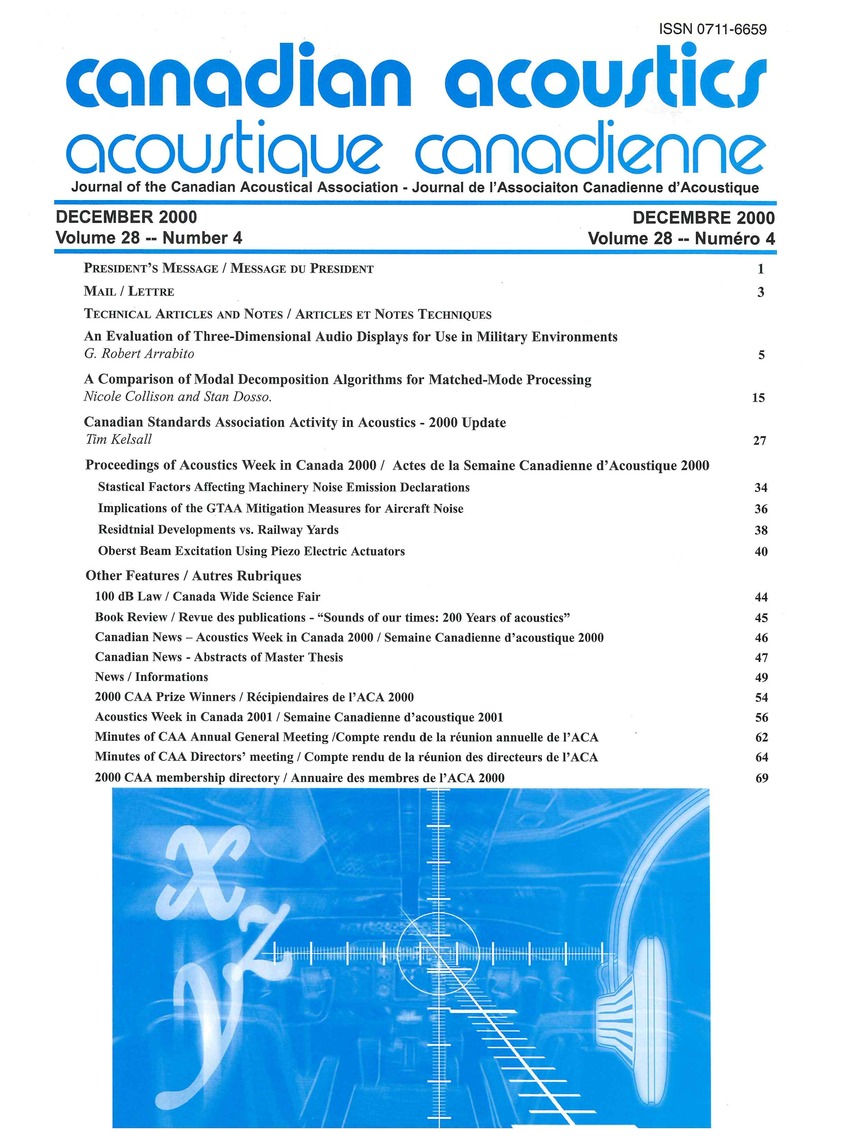Oberst Beam Excitation Using Piezo Electric Actuators
Mots-clés :
Oberst BeamRésumé
The «Oberst beam» is a classical method for the characterization of damping material based on a multilayer cantilever beam (base beam + one or two layers of other materials). As the base beam is made of a rigid and lightly damped material (steel, aluminum), the most critical aspect of this method is to properly excite the beam without adding weight or damping. So, exciting the beam with a shaker is not recommended because of the added mass. Alternative solutions are suggested such as electro-magnetic noncontacting transducer (tachometer pick-up, for example) can provide a good excitation but it is limited to ferro-magnetic materials. As aluminum and stainless-steel are widely used for the base beam, a small bits of magnetic material must be fastened adhesively to achieve specimen excitation. This method creates two other problems. The first one is the difficulty to properly measure the excitation force and the second one is the added damping due to the magnetic materials bits in the case of non-magnetic base beam. However, the measurement of the motion of the beam can be easily made using a non-contact transducer (a laser vibrometer for example).Fichiers supplémentaires
Publié-e
Comment citer
Numéro
Rubrique
Licence
Author Licensing Addendum
This Licensing Addendum ("Addendum") is entered into between the undersigned Author(s) and Canadian Acoustics journal published by the Canadian Acoustical Association (hereinafter referred to as the "Publisher"). The Author(s) and the Publisher agree as follows:
-
Retained Rights: The Author(s) retain(s) the following rights:
- The right to reproduce, distribute, and publicly display the Work on the Author's personal website or the website of the Author's institution.
- The right to use the Work in the Author's teaching activities and presentations.
- The right to include the Work in a compilation for the Author's personal use, not for sale.
-
Grant of License: The Author(s) grant(s) to the Publisher a worldwide exclusive license to publish, reproduce, distribute, and display the Work in Canadian Acoustics and any other formats and media deemed appropriate by the Publisher.
-
Attribution: The Publisher agrees to include proper attribution to the Author(s) in all publications and reproductions of the Work.
-
No Conflict: This Addendum is intended to be in harmony with, and not in conflict with, the terms and conditions of the original agreement entered into between the Author(s) and the Publisher.
-
Copyright Clause: Copyright on articles is held by the Author(s). The corresponding Author has the right to grant on behalf of all Authors and does grant on behalf of all Authors, a worldwide exclusive license to the Publisher and its licensees in perpetuity, in all forms, formats, and media (whether known now or created in the future), including but not limited to the rights to publish, reproduce, distribute, display, store, translate, create adaptations, reprints, include within collections, and create summaries, extracts, and/or abstracts of the Contribution.


